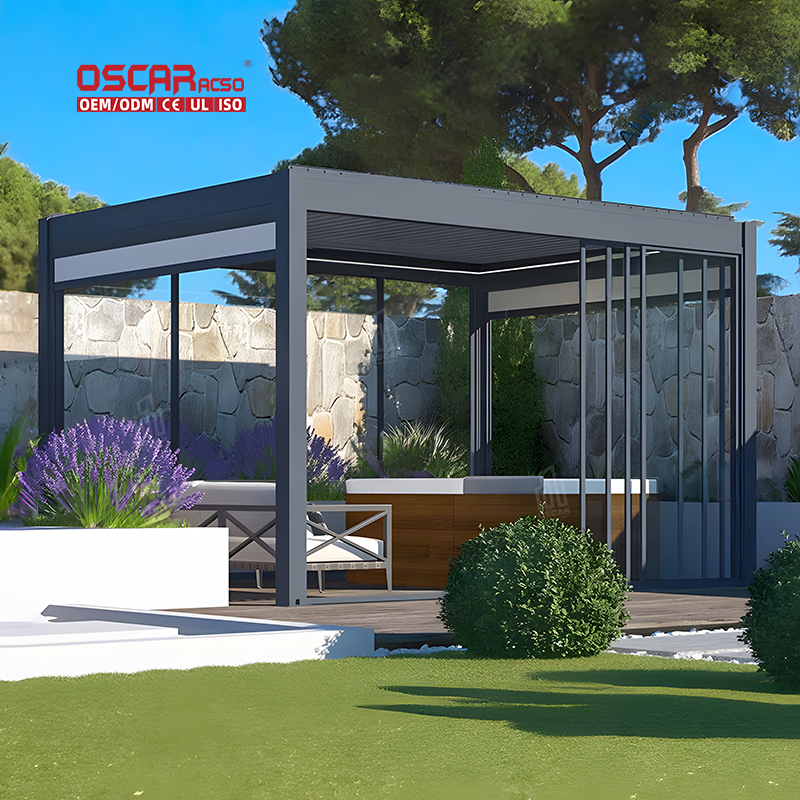Pergolas and Permanence, Unraveling the Structural Truth
When enhancing outdoor living spaces, homeowners often gravitate toward pergolas for their aesthetic appeal and function...

When enhancing outdoor living spaces, homeowners often gravitate toward pergolas for their aesthetic appeal and functional shade. But a common question arises: Are pergolas considered permanent structures? The answer isn’t a simple yes or no—it hinges on materials, construction methods, and local regulations. Let’s explore what truly defines a pergola’s permanence and why it matters for your backyard investment. 🌿
What Makes a Structure “Permanent”?
Permanent structures are typically defined by their use of durable materials (e.g., steel, concrete, brick, or treated wood) and an expected lifespan exceeding six months. They often require foundations, such as concrete footings, and must comply with local building codes. Temporary structures, like fabric shade sails or portable gazebos, are designed for short-term use and lack these robust features. Pergolas fall into a gray area: while some are built to last decades, others may be designed for temporary convenience.
.jpg)
Pergola Materials: From Temporary to Permanent
The longevity of a pergola largely depends on its materials:

- •
Wood Classics: Cedar and pressure-treated wood pergolas offer a natural look but require regular maintenance to prevent decay. With proper care, they can last 10–15 years, bridging the gap between semi-permanent and permanent.
- •
Vinyl and Metal: Vinyl pergolas are low-maintenance and highly durable, often lasting decades without fading or warping. Aluminum and steel pergolas, especially those with powder-coated finishes, resist rust and can withstand harsh weather, making them strong candidates for permanent status.
.jpg)
- •
Composite Options: Modern composites blend wood fibers with synthetic materials, offering wood-like aesthetics without the upkeep. These materials are engineered for longevity and are often classified as permanent.
Construction Methods: Anchoring for Permanence
How a pergola is installed significantly influences its classification:
- •
Freestanding Pergolas: These are often anchored with concrete footings buried below grade, providing stability against wind and weather. This method is typical for permanent structures.
- •
Attached Pergolas: When secured to a building via ledger boards and flashing, they become an extension of the home’s structure—almost always considered permanent.
- •
DIY and Kits: Some pergola kits are designed for easy assembly and disassembly, leaning toward temporary use. However, if securely anchored and built with durable materials, even DIY projects can achieve permanence.
Local Regulations: The Deciding Factor
Building codes and zoning laws play a critical role in defining permanence. In many jurisdictions, pergolas exceeding certain size or height thresholds require permits and must meet specific standards. For example:
- •
In Calgary, pergolas securely anchored to the ground are often classified as permanent and may require permits.
- •
Toronto mandates permits for pergolas larger than 15 square meters and has rules regarding setbacks from property lines.
Always consult local authorities before construction to avoid legal pitfalls.

Why Does Permanence Matter?
Understanding your pergola’s classification is crucial for:
- •
Property Value: Permanent structures can increase resale value by adding functional outdoor space.
- •
Insurance and Taxes: Permits and permanent status may affect insurance premiums and property tax assessments.
- •
Long-Term Use: Investing in a permanent pergola means decades of enjoyment with minimal replacement costs.
Blurring the Lines: Modern Pergola Innovations
Today’s pergolas challenge traditional definitions. Motorized louvered systems (e.g., StruXure) allow adjustable roofs that provide shade or full enclosure, blending elements of permanent and dynamic structures. Similarly, vinyl pergolas with aluminum internal supports offer both durability and flexibility, making them ideal for poolside areas where wind and weather resistance are priorities.
Personal Insight: The Future of Pergolas
As a lover of outdoor design, I believe pergolas are evolving beyond mere shade providers. They’re becoming integrated outdoor rooms—equipped with lighting, fans, and even misting systems. This trend underscores their shift toward permanence: homeowners are investing in structures that serve as year-round extensions of their living spaces. For those in climates with harsh weather, a well-built pergola isn’t just an accessory; it’s a legacy feature.
Conclusion: Are Pergolas Permanent?
While pergolas can be designed for temporary use, most high-quality installations—constructed with durable materials and proper foundations—are indeed considered permanent structures. Their classification ultimately depends on local laws, construction methods, and material choices. By prioritizing robust materials and professional installation, homeowners can ensure their pergola stands the test of time, transforming their outdoor space into a lasting retreat. 🌟

